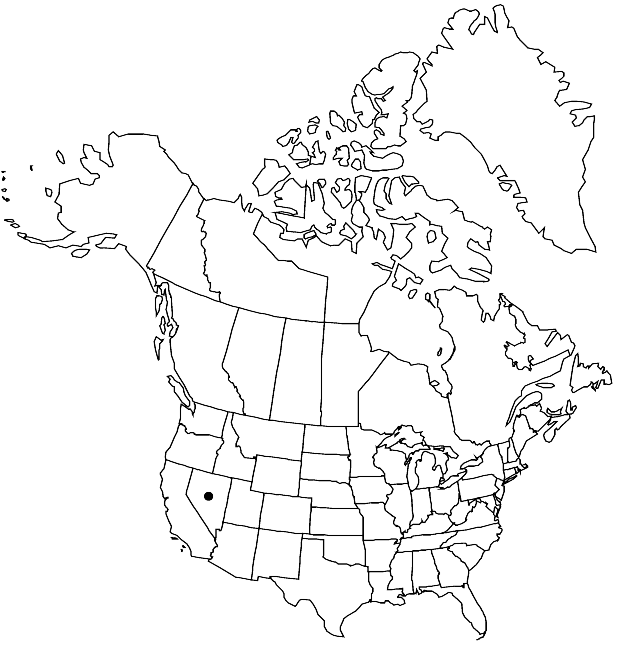Caulanthus barnebyi
Brittonia 32: 148, fig. 1. 1980.
Perennials; glabrous throughout. Stems erect or ascending, unbranched or branched distally, 5–11 dm. Basal leaves not rosulate; petiole 1.5–3.8 cm; blade broadly obovate to broadly ovate or oblong, 3.5–15.5 cm × 22–100 mm, margins entire or coarsely dentate-sinuate. Cau-line leaves (distalmost) shortly petiolate to subsessile; blade linear to lanceolate or oblanceolate, margins entire. Racemes (densely flowered), without a terminal cluster of sterile flowers. Fruiting pedicels ascending, 5–17 mm. Flowers: sepals erect (purplish or sometimes green), ovate-oblong to lanceolate, 7.5–11 × 2.5–3 mm (equal); petals creamy white (with prominent purple or brown veins),12.5–18.5 mm, blade 6–8 × 2–2.5 mm, not or slightly crisped, claw oblanceolate, 5–9 × 1.2–2 mm; filaments tetradynamous, median pairs 3–5 mm, lateral pair 2.5–4.5 mm; anthers narrowly oblong, equal, 3–4.5 mm. Fruits divaricate to ascending (often distinctly curved), terete, 5.7–12.5 cm × 1.7–2.3 mm; valves each with obscure midvein; ovules 76–90 per ovary; style usually obsolete, rarely to 2.5 mm; stigma strongly 2-lobed (lobes to 0.4 mm, connivent, opposite replum). Seeds 1.4–2.1 × 0.8–1.2 mm. 2n = 20.
Phenology: Flowering May–Jun.
Habitat: Dry, steep slopes, rocky outcrops, on slate, metamorphic, or igneous substrates
Elevation: 1300-1500 m
Discussion
Of conservation concern.
Caulanthus barnebyi is known from Humboldt and Pershing counties.
Selected References
None.
